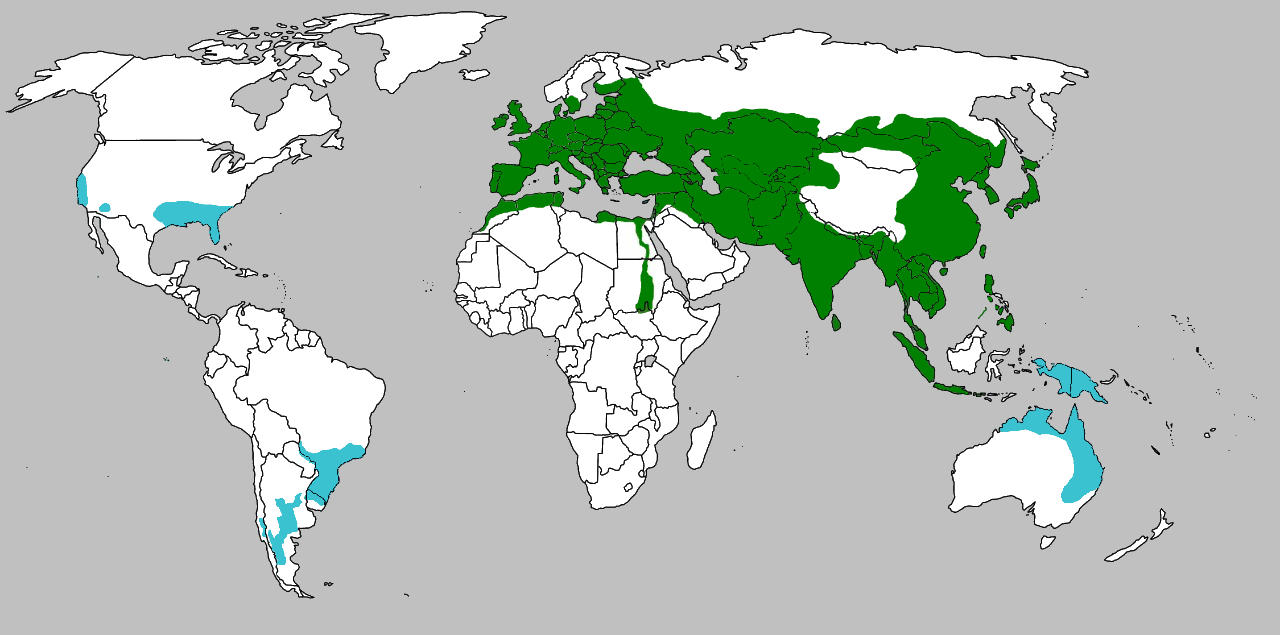|
Northern Short-tailed Gymnure
The northern short-tailed gymnure (''Hylomys peguensis'') is a gymnure in China, Thailand, Laos, Vietnam, Cambodia, Myanmar, and peninsular Malaysia. It was previously recognized as a subspecies of ''Javan short-tailed gymnure, H. suillus'', but now is regarded as a full species. References {{Taxonbar, from=Q124056117 Hylomys Mammals described in 1859 Taxa named by Edward Blyth Mammals of China Mammals of Vietnam Mammals of Cambodia Mammals of Laos Mammals of Thailand Mammals of Myanmar Mammals of Malaysia ... [...More Info...] [...Related Items...] OR: [Wikipedia] [Google] [Baidu] |
Edward Blyth
Edward Blyth (23 December 1810 – 27 December 1873) was an English zoologist who worked for most of his life in India as a curator of zoology at the Asiatic Society, Royal Asiatic Society of Bengal in Calcutta. He set about updating the museum's catalogues, publishing a ''Catalogue of the Birds of the Asiatic Society'' in 1849. He was prevented from doing much fieldwork himself, but received and described bird specimens from Allan Octavian Hume, A.O. Hume, Samuel Tickell, Robert Swinhoe among others. His ''Natural History of the Cranes'' was published posthumously in 1881. Early life and work On 23 December 1810, Blyth was born in London. His father, a cloth merchant, clothier, died in 1820 and his mother sent him to Dr. Fennell's school in Wimbledon, London, Wimbledon. He took an interest in reading, but was often to be found spending time in the woods nearby. Leaving school in 1825, he went to study chemistry, at the suggestion of Dr. Fennell, in London under Dr. Keating at S ... [...More Info...] [...Related Items...] OR: [Wikipedia] [Google] [Baidu] |
Gymnure
Gymnures, also called hairy hedgehogs or moonrats, are mammals belonging to the subfamily Galericinae, in the family Erinaceidae and the order Eulipotyphla. Gymnures resemble rats but are not closely related as they are not rodents; they are instead closely related to hedgehogs, which also belong to Erinaceidae. They are thought to have appeared in Eastern Asia before their closest relatives, and changed little from the original ancestor, which is thought to have been also the ancestor of the shrews. Description Although the gymnures are more closely related to the hedgehogs, full-grown gymnures superficially resemble large rats, shrews, and opossums. The gymnure's body plan is believed to resemble that of the earliest mammals, with a large, toothy head about 1/3 the length of the total body, a naked furless tail for balance and thermoregulatory purposes, and a plantigrade stance. In direct contrast to the closely related hedgehogs, gymnures are not spiny. They also have an ... [...More Info...] [...Related Items...] OR: [Wikipedia] [Google] [Baidu] |
Javan Short-tailed Gymnure
The Javan short-tailed gymnure (''Hylomys suillus'') is a small mammal from the family of the Erinaceidae. The scientific name of the species is first published by Salomon Müller in 1840. This species used to include the ''dorsalis'', ''maxi'', and ''peguensis'' subspecies, but these have now been elevated to species of their own: the Bornean short-tailed gymnure, Max's short-tailed gymnure, and the northern short-tailed gymnure. In addition, two new species were created from two other populations of ''H. suillus''. The range of this species is now limited to Java. Description The upperparts of the short-tailed gymnure are reddish brown to dark brown, with a grey tinge. The underparts are light grey, with white-tipped hairs. It resembles a large shrew, with a long snout and a very short hairless tail. It also has rounded, leathery ears. The head and body length is and the tail length measures Habits and habitat The short-tailed gymnure is active both during day and at ... [...More Info...] [...Related Items...] OR: [Wikipedia] [Google] [Baidu] |
Hylomys
''Hylomys'' is a small genus of the family Erinaceidae. ''Hylomys'' species, like all species in the subfamily Galericinae, are known as gymnures or moonrats. Their closest relatives include the fossil '' Lantanotherium'' and '' Thaiagymnura'' and the living '' Neotetracus'' and '' Neohylomys''. Members of this genus are found in Southeast Asia Southeast Asia is the geographical United Nations geoscheme for Asia#South-eastern Asia, southeastern region of Asia, consisting of the regions that are situated south of China, east of the Indian subcontinent, and northwest of the Mainland Au ... and Eastern Asia. Species * '' Hylomys megalotis'' Jenkins & M. F. Robinson, 2002 (Long-eared gymnure) * '' Hylomys parvus'' Robinson & Kloss, 1916 (Dwarf gymnure) * '' Hylomys suillus'' S. Müller, 1840 (Short-tailed gymnure) References Gymnures Mammal genera Taxa named by Johannes Peter Müller {{erinaceidae-stub ... [...More Info...] [...Related Items...] OR: [Wikipedia] [Google] [Baidu] |
Mammals Described In 1859
A mammal () is a vertebrate animal of the Class (biology), class Mammalia (). Mammals are characterised by the presence of milk-producing mammary glands for feeding their young, a broad neocortex region of the brain, fur or hair, and three Evolution of mammalian auditory ossicles, middle ear bones. These characteristics distinguish them from reptiles and birds, from which their ancestors Genetic divergence, diverged in the Carboniferous Period over 300 million years ago. Around 6,640 Neontology#Extant taxon, extant species of mammals have been described and divided into 27 Order (biology), orders. The study of mammals is called mammalogy. The largest orders of mammals, by number of species, are the rodents, bats, and eulipotyphlans (including hedgehogs, Mole (animal), moles and shrews). The next three are the primates (including humans, monkeys and lemurs), the Artiodactyl, even-toed ungulates (including pigs, camels, and whales), and the Carnivora (including Felidae, ... [...More Info...] [...Related Items...] OR: [Wikipedia] [Google] [Baidu] |
Taxa Named By Edward Blyth
In biology, a taxon (back-formation from ''taxonomy''; : taxa) is a group of one or more populations of an organism or organisms seen by taxonomists to form a unit. Although neither is required, a taxon is usually known by a particular name and given a particular ranking, especially if and when it is accepted or becomes established. It is very common, however, for taxonomists to remain at odds over what belongs to a taxon and the criteria used for inclusion, especially in the context of rank-based (" Linnaean") nomenclature (much less so under phylogenetic nomenclature). If a taxon is given a formal scientific name, its use is then governed by one of the nomenclature codes specifying which scientific name is correct for a particular grouping. Initial attempts at classifying and ordering organisms (plants and animals) were presumably set forth in prehistoric times by hunter-gatherers, as suggested by the fairly sophisticated folk taxonomies. Much later, Aristotle, and later still ... [...More Info...] [...Related Items...] OR: [Wikipedia] [Google] [Baidu] |
Mammals Of China
This is a list of the mammal species recorded in China. There are 495 mammal species in China, of which thirteen are critically endangered, twenty-four are endangered, forty-seven are vulnerable, and seven are near threatened. One of the species listed for China can no longer be found in the wild. The following tags are used to highlight each species' conservation status as assessed by the International Union for Conservation of Nature: Some species were assessed using an earlier set of criteria. Species assessed using this system have the following instead of near threatened and least concern categories: Order: Sirenia (manatees and dugongs) Sirenia is an order of fully aquatic, herbivorous mammals that inhabit rivers, estuaries, coastal marine waters, swamps, and marine wetlands. All four species are endangered. *Family: Dugongidae **Genus: ''Dugong'' ***Dugong, ''D. dugon'' Order: Proboscidea (elephants) The elephants comprise three living species and are the larges ... [...More Info...] [...Related Items...] OR: [Wikipedia] [Google] [Baidu] |
Mammals Of Vietnam
A mammal () is a vertebrate animal of the Class (biology), class Mammalia (). Mammals are characterised by the presence of milk-producing mammary glands for feeding their young, a broad neocortex region of the brain, fur or hair, and three Evolution of mammalian auditory ossicles, middle ear bones. These characteristics distinguish them from reptiles and birds, from which their ancestors Genetic divergence, diverged in the Carboniferous Period over 300 million years ago. Around 6,640 Neontology#Extant taxon, extant species of mammals have been described and divided into 27 Order (biology), orders. The study of mammals is called mammalogy. The largest orders of mammals, by number of species, are the rodents, bats, and eulipotyphlans (including hedgehogs, Mole (animal), moles and shrews). The next three are the primates (including humans, monkeys and lemurs), the Artiodactyl, even-toed ungulates (including pigs, camels, and whales), and the Carnivora (including Felidae, ... [...More Info...] [...Related Items...] OR: [Wikipedia] [Google] [Baidu] |
Mammals Of Cambodia
The wildlife of Cambodia is very diverse with at least 162 mammal species, 600 bird species, 176 reptile species (including 89 subspecies), 900 freshwater fish species, 670 invertebrate species, and more than 3000 plant species. A single protected area, Keo Seima Wildlife Sanctuary, is known to support more than 950 total species, including 75 species that are listed as globally threatened on the IUCN Red List. An unknown amount of species remains to be described by science, especially the insect group of butterflies and moths, collectively known as lepidopterans.REPORT 4 Fauna and flora diversity studies in Botum Sakor National Park, Cambodia April 2005 – September 2009 Frontier Cambod ... [...More Info...] [...Related Items...] OR: [Wikipedia] [Google] [Baidu] |
Mammals Of Laos
This is a list of the mammal species recorded in Laos. Order: Artiodactyla (even-toed ungulates and cetaceans) Order: Carnivora (carnivorans) Order: Chiroptera (bats) Order: Eulipotyphla (hedgehogs, shrews, moles and relatives) Order: Lagomorpha (lagomorphs) Order: Pholidota (pangolins) Order: Primates Order: Proboscidea (elephants) Order: Rodentia (rodents) Order: Scandentia (treeshrews) Locally extinct The following species are locally extinct in the country: *Indian hog deer, ''Axis porcinus'' possibly extirpated *Wild water buffalo, ''Bubalus arnee'' *Sumatran rhinoceros, ''Dicerorhinus sumatrensis'' * Javan rhinoceros, ''Rhinoceros sondaicus'' See also * List of birds of Laos References External links * {{DEFAULTSORT:List Of Mammals Of Laos . Mammals Laos Laos Laos Laos, officially the Lao People's Democratic Republic (LPDR), is the only landlocked country in Southeast Asia. It is bordered by Myanmar and China to ... [...More Info...] [...Related Items...] OR: [Wikipedia] [Google] [Baidu] |
Mammals Of Thailand
A mammal () is a vertebrate animal of the Class (biology), class Mammalia (). Mammals are characterised by the presence of milk-producing mammary glands for feeding their young, a broad neocortex region of the brain, fur or hair, and three Evolution of mammalian auditory ossicles, middle ear bones. These characteristics distinguish them from reptiles and birds, from which their ancestors Genetic divergence, diverged in the Carboniferous Period over 300 million years ago. Around 6,640 Neontology#Extant taxon, extant species of mammals have been described and divided into 27 Order (biology), orders. The study of mammals is called mammalogy. The largest orders of mammals, by number of species, are the rodents, bats, and eulipotyphlans (including hedgehogs, Mole (animal), moles and shrews). The next three are the primates (including humans, monkeys and lemurs), the Artiodactyl, even-toed ungulates (including pigs, camels, and whales), and the Carnivora (including Felidae, ... [...More Info...] [...Related Items...] OR: [Wikipedia] [Google] [Baidu] |
Mammals Of Myanmar
A mammal () is a vertebrate animal of the class Mammalia (). Mammals are characterised by the presence of milk-producing mammary glands for feeding their young, a broad neocortex region of the brain, fur or hair, and three middle ear bones. These characteristics distinguish them from reptiles and birds, from which their ancestors diverged in the Carboniferous Period over 300 million years ago. Around 6,640 extant species of mammals have been described and divided into 27 orders. The study of mammals is called mammalogy. The largest orders of mammals, by number of species, are the rodents, bats, and eulipotyphlans (including hedgehogs, moles and shrews). The next three are the primates (including humans, monkeys and lemurs), the even-toed ungulates (including pigs, camels, and whales), and the Carnivora (including cats, dogs, and seals). Mammals are the only living members of Synapsida; this clade, together with Sauropsida (reptiles and birds), constitutes the large ... [...More Info...] [...Related Items...] OR: [Wikipedia] [Google] [Baidu] |






